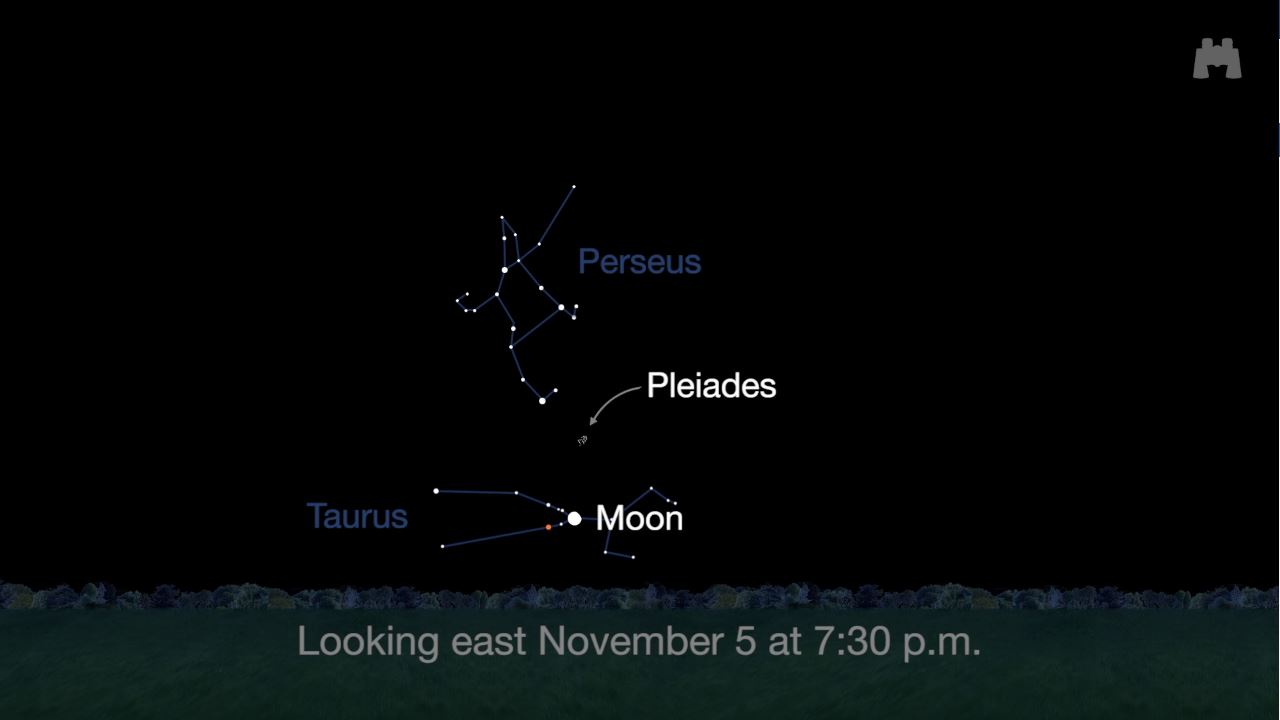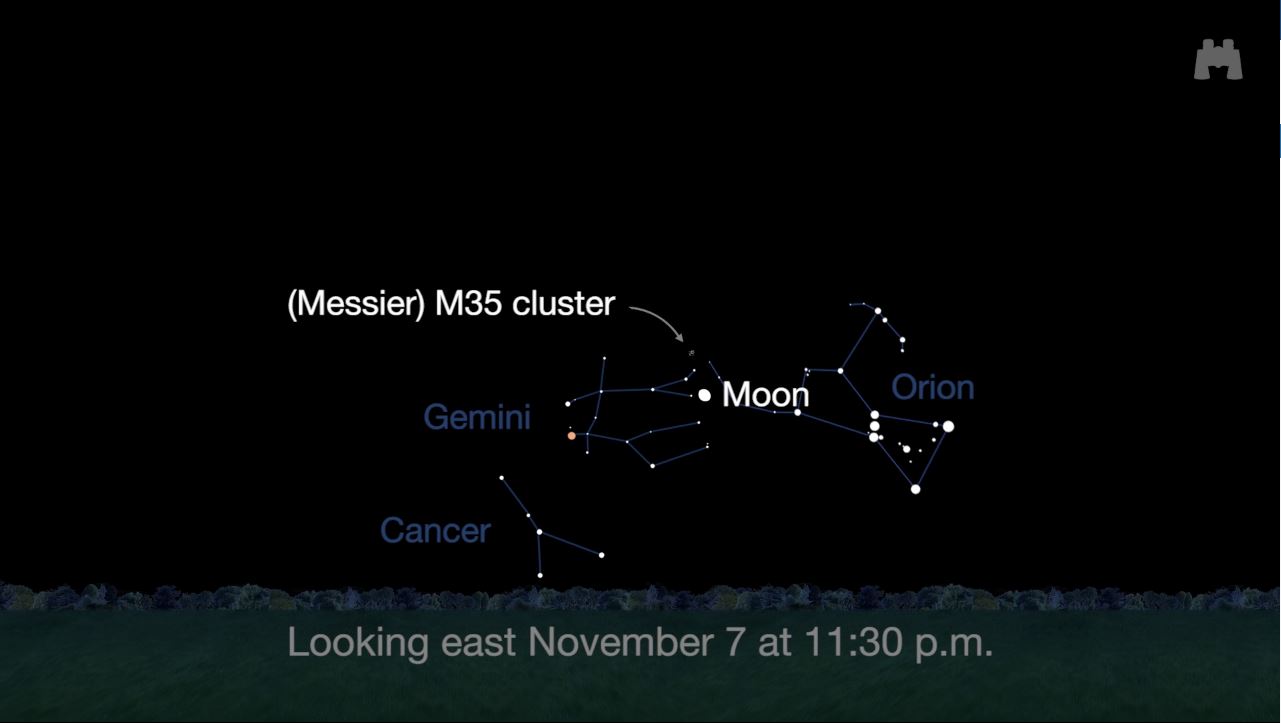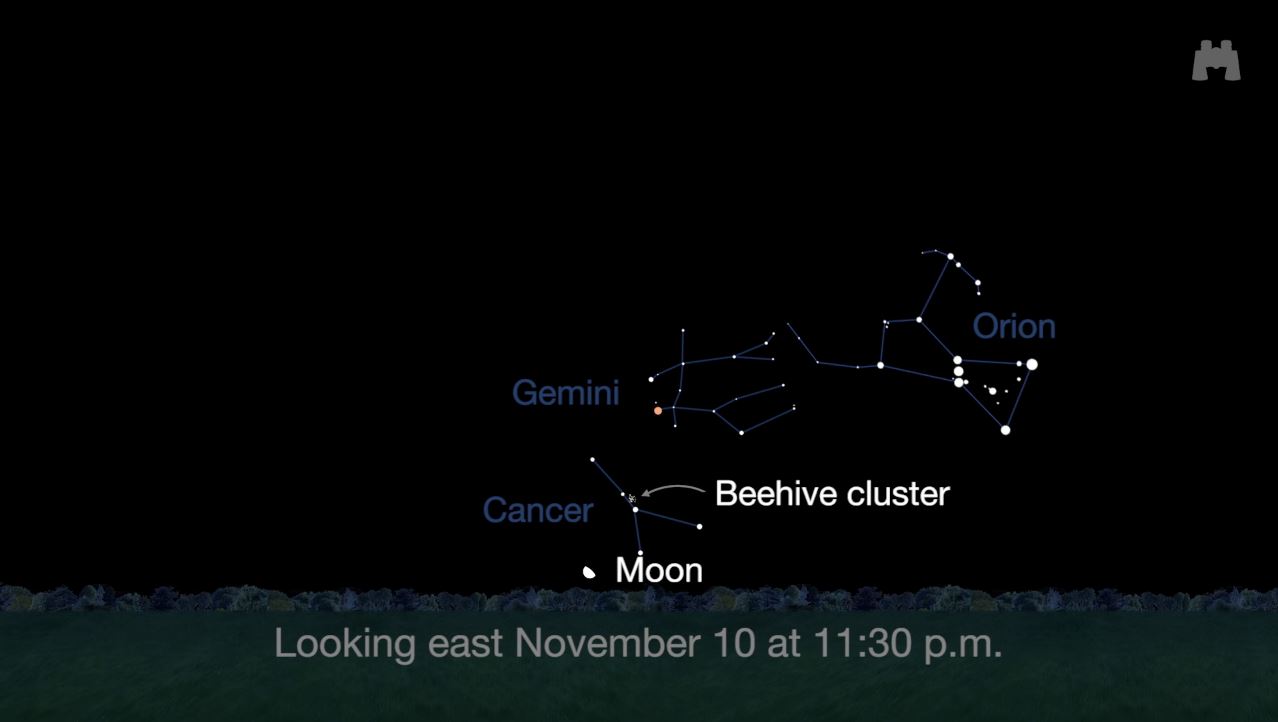Moon Points the Way to Three Star Clusters This Month
While the moon is sometimes a frustrating object for deep-sky-object observers — the light from the surface can wash out faint objects — in November, our celestial neighbor will point the way to three gorgeous star clusters, but you'll need binoculars to see them.
Here are the clusters the moon will be close to in November, according to NASA.
On Sunday (Nov. 5), the moon will glide past the Pleiades, which are sometimes nicknamed the "Seven Sisters" because seven of the stars are reportedly visible with the naked eye. (This depends on how good your eyesight is, of course.) The star cluster has been known since antiquity and resides in the constellation Taurus. It lies about 445 light-years away from Earth and is full of young stars that average only 125 million years old, according to NASA. (By comparison, the sun is more than 4.5 billion years old.) Lately, NASA's planet-hunting Kepler space telescope has been examining the Pleiades to learn more about the clusters' star movements. [Brightest Planets of November's Night Sky ]

On Tuesday (Nov. 7), the moon will be close to Messier 35 (or M35). In the 18th century, Charles Messier, a comet hunter who cataloged objects in the sky that could be confused for comets, created a list, now called the Messier list, of 110 objects. Messier first observed M35 on Aug. 30, 1764. The object is roughly 2,850 light-years away from Earth (seven times farther than the Pleiades) and contains a lot more stars than the Pleiades.

Then, on Friday (Nov. 10), the moon will pass by the Beehive Cluster (more formally known as M44 and also listed in Messier's catalog). The cluster is also visible to the naked eye and was once thought to be a gassy nebula, until Galileo observed it with a telescope in the 17th century and noticed individual stars. The stars are roughly 400 million years old, and the Beehive is about 580 light-years away from Earth, according to NASA's Astronomy Picture of the Day.

To look at the clusters, bring a pair of binoculars or a telescope and give your eyes (and the equipment) at least 20 minutes to adjust to the darkness and cold temperatures. (If it's very cold, your equipment may need even more time; make sure to use a red filter if you must look at something bright, such as your phone, after your eyes have adjusted.) You can also use your naked eye to look at the clusters if you don't have equipment handy, but the objects will appear as faint blobs in the sky. You'll have a better chance of seeing the clusters if you go far from the city and light-polluted areas.
Follow us @Spacedotcom, Facebook and Google+. Original article on Space.com.
Get the Space.com Newsletter
Breaking space news, the latest updates on rocket launches, skywatching events and more!
Join our Space Forums to keep talking space on the latest missions, night sky and more! And if you have a news tip, correction or comment, let us know at: community@space.com.

Elizabeth Howell (she/her), Ph.D., was a staff writer in the spaceflight channel between 2022 and 2024 specializing in Canadian space news. She was contributing writer for Space.com for 10 years from 2012 to 2024. Elizabeth's reporting includes multiple exclusives with the White House, leading world coverage about a lost-and-found space tomato on the International Space Station, witnessing five human spaceflight launches on two continents, flying parabolic, working inside a spacesuit, and participating in a simulated Mars mission. Her latest book, "Why Am I Taller?" (ECW Press, 2022) is co-written with astronaut Dave Williams.









